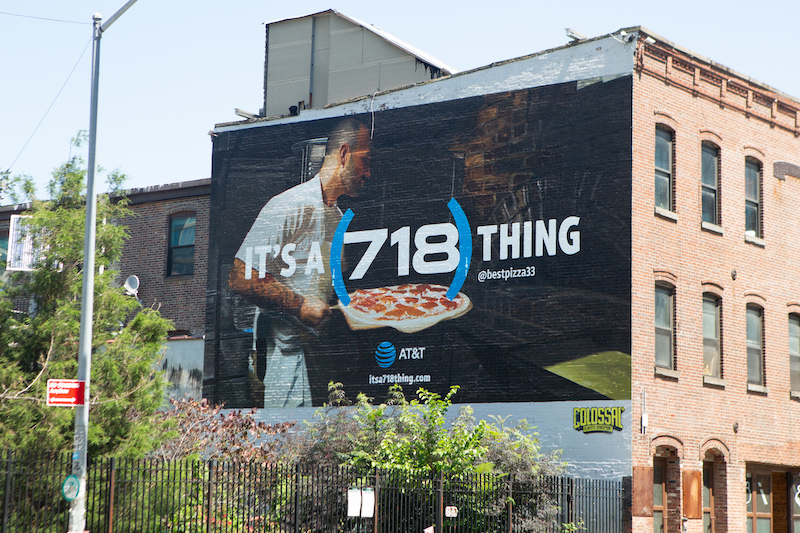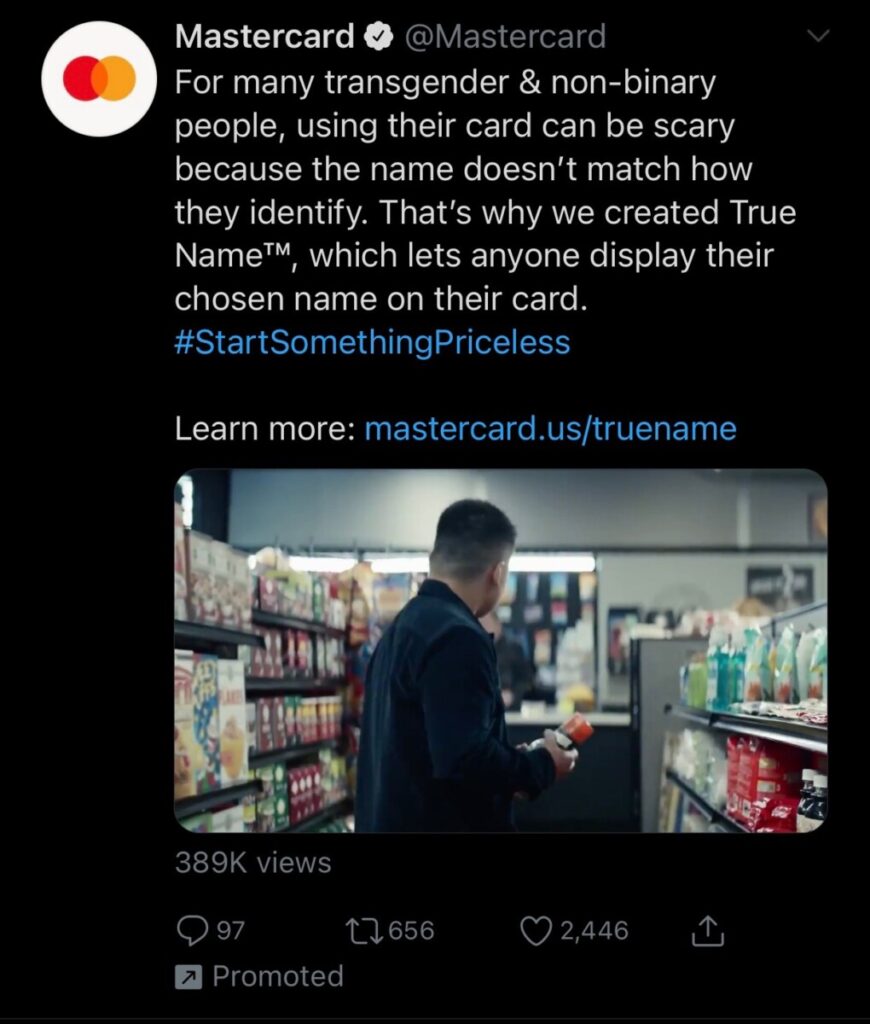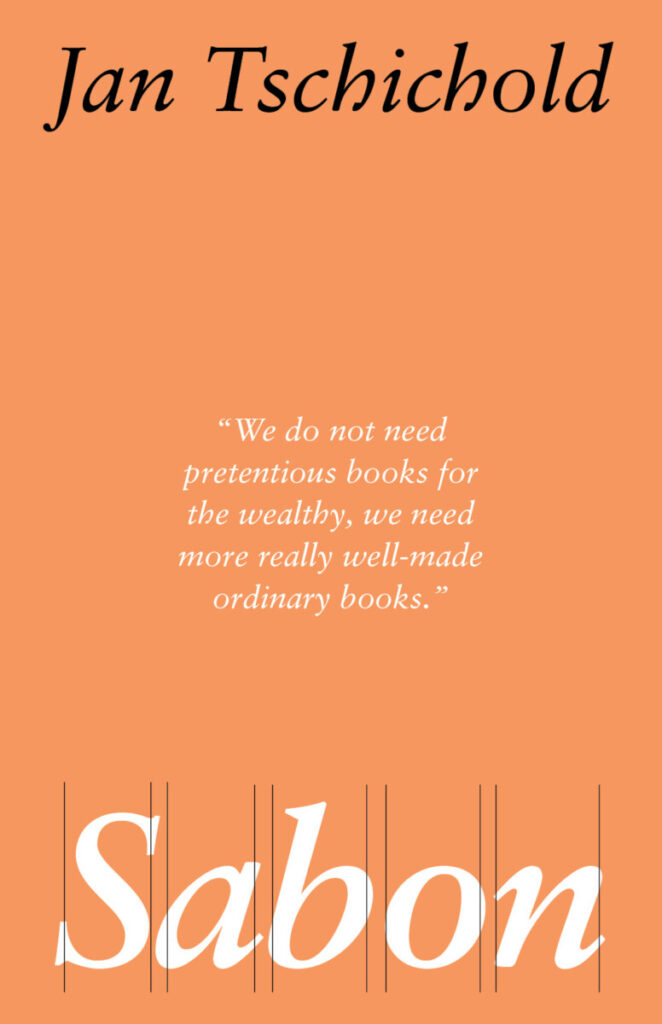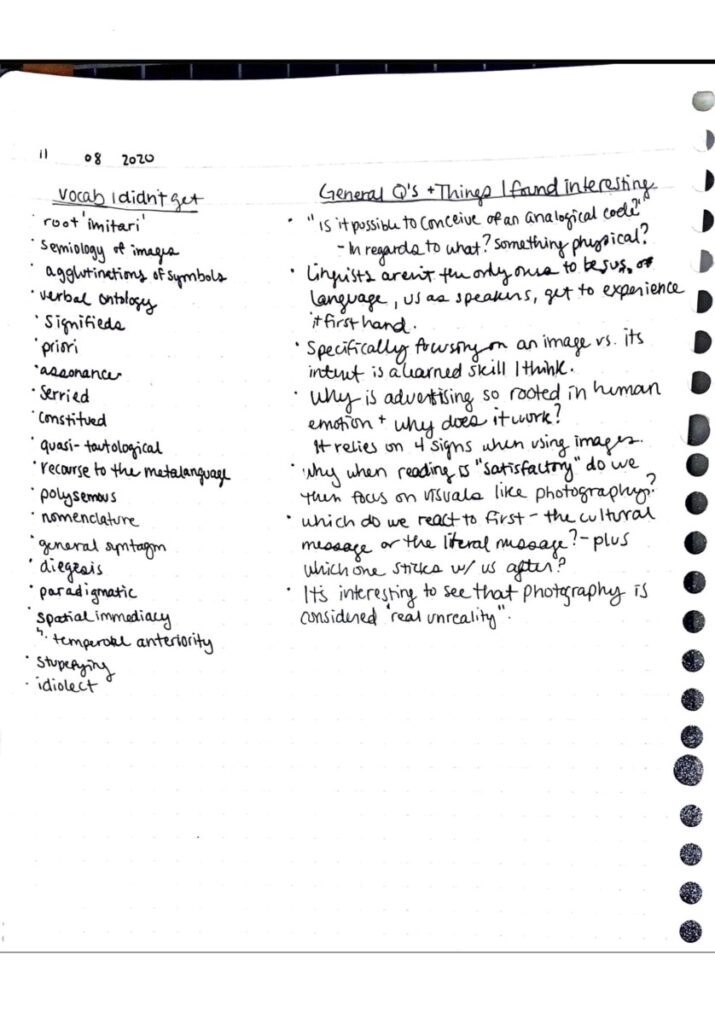Author: Gabriel Morales (Page 1 of 2)


For this week’s reading, it focused on technology and the media we use to help convey our ideas across. The readings were from Marshall McCluhan’s Understanding Media: The Extensions of Man. McCluhan starts off by saying “the medium is the message” which I interpreted as media we use is impacted by the technology accessible to us at any given time. Comparing ideas and products from the past while not understanding what made them work is an uphill battle. Technology was only so advanced at that point in time and so inventors and creators worked with what they had. As technology changes and evolves, so do our ideas. McCluhan then goes on to say that jobs also change with technology and need. So losing jobs is not that black and white as we may think it is. It goes deeper than saying we lost jobs or that “millennials are killing x job market or product”. as our needs change so do our jobs. In the early 1900s when the automobile was barely an idea, we wouldn’t expect Ford to create highly capable cars meant for luxury or speed, we only think as far as what we were taught.
The message of any media will always rely on the content. McCluhan relates this idea to the written word and print media. The media can only do so much but without the meaning or intent of a message, the medium will always be just that. A message carries thought and it serves a purpose, whether it be to inform or persuade the audience. Moving onto another example, he uses electricity spelling out a brand name as something that attracts consumers and is finally notable rather than just electricity. This speaks to the realm of advertising as it basically uses the same medium and example. Putting up an LED screen with no information in it on a billboard spot or on television will not produce any revenue or interest. When there is information whether it be complex or one or two words, it will entice people’s curiosity and in turn, will create web traffic and interest.
In chapter seven, McCluhan is discussing the effects of technology changing has on our social lives. “For the massive social surgery is needed to insert new technology into the group mind.” For me, to rule out any unnecessary anxiety and backlash we would need to bridge the gap between old and new technology. Using the example of a rotary telephone from the 1910s and a smartphone from the 2010s, we simply cannot jump from one to the other, there needs to be familiarity among the items so they can be functional and useful. Taking things slow and reinventing the ideas of what a phone does are important to think about when approached with new technology. Over a century we have refined the idea of a phone through many trial and error including, to landlines, the flip phone, to the sidekick from TMobile, and onto smartphones like the iPhone. And even with all this new technology, we are reverting to the modern take on the classic flip phone, Samsung Galaxy Z Flip.


For this week’s readings, design was the most important factor. Jan Tschichold was a designer who basically invented using grids when working on designs. They mention that the grid is an “invisible backbone” and it gives purpose to the design. In Gerstner’s reading, he described the grid as “complicated to anyone not knowing the key.”
This poster I designed was from a project about Jan Tschichold and his work. I decided to use a font he created called “Sabon” and included a quote of his. I designed this poster in a way that was reminiscent of his work at Penguin Publishing, since he worked there for a long time and even helped establish the covers for their books. I included my grids in the first image to show its impact and that I had intentionally designed with purpose like the designers advised in the readings.
For this weeks readings they focused on technology and it’s impact on the art world.
The reading on Bayer, “On Typography” starts with the line “typography is a service art not a fine art.” This sets the the theme of the reading in my opinion. In this line and subsequent paragraphs, he is talking about the ideas artists have made regarding typography. It is hard to believe that the Gutenberg press was at the forefront of technology when it was first made, vs now we have all integrated into life with technology as powerful and small to fit in our pockets. This is the norm we have ascribed to and thinking about the beginnings of tech can help us move forward.
Later on in the reading he mentions, “their efforts must be valued as they keep the aesthetic from falling, and because they alone set the pace in taste.” To me this sums up the entire reading, the whole point of having skills like book making, or hand lettering, is to have refined end product that is both pleasing to look at and also reviewed for being unique or uncommon. Going back to the basics and understanding the process is a great lesson and I can’t think of another substitute. For example traditional book making from creating pages to binding the finished book have lost its novelty through things like the press and publishing companies. As an artist I appreciate the basics and the way things were made. And as a consumer, I appreciate the choice I have when I go into a Strand store. I feel it is important to know where we came from whether it be culturally or historically so we can make even better ideas.
This weeks’ readings were talking about technology and how it influences art and design.
Marinetti’s The Futurist Manifesto spoke about technology through a story. The line “Alone with the engineers in the infernal stokeholes of great ships, alone with the black spirits which rage in the belly of rogue locomotives, alone with the drunkards beating their wins against the wall.” The imagery he shows in this line helped me understand the story the second time I read it. I envisioned the cars and boats and planes he speaks about and understood that there is immense pride in designing items that help revolutionize travel and society.
And further on “we today are founding futurism, because we want to deliver Italy from its gangrene of professors, archaeologists, tourist guides and antiquaries.” the desire to create new technology to help citizens in their everyday lives. And the final paragraphs saying “The oldest among us are not yet thirty, and yet we have already wasted treasures, treasures of strength, love, courage and keen will, hastily, deliriously, without thinking, with all our might, till we are out of breath.” we get the sense that a designer’s work is never done.
In El Lissitzky’s Our Book he discusses specific technology that has influenced our society and how humanity has also demanded solutions to problems we didn’t even know we had. He mentions Gutenbergs’ moveable type machine which was revolutionary. He mentions in the reading that as we have more people with access to writing and mailing letters, the more that the corresponding business grows and it will eventually need improvement or change so it can work better. So once the telephone was invented and more people gained access to it, people were now calling each other rather than writing letters so it relieved stress on the mail industry. The need was changed and then people gravitated to what was easier for them. Lissitzky also gives an example of a book. Starting out as a bound book with separate pages, then with color, and as times progressed we invented posters, then large scale advertisements meant to be seen on highways and on roads.
Rodchenko has a similar theme in his Manifesto of the Constructivist Group, People might see a wall or a plane but it is up to artists and designers to create things from nothing. We then see amazing inventions like the zeppelin, a helicopter…etc. He restates this thought with “We-are the beginning our work is today.”
The readings for this week were all about linguistics and the factors that dictate language. Language is a form of communication that humans use to express themselves. Humans have had a history of different forms of communication from visual, vocalizing, and writing. In design, it is all about communicating with other people usually trying to sell an item or product. To sell or communicate an idea you have to express the main message and attract your consumer as well. If you’re unable to get your point across, the design is not effective and can cost you sales. The “Counting Sheep” reading, discusses signs or iconography and the written and verbal language. We have discovered that using icons as a form of language is effective and a fast way to understand. One line I found interesting in the reading was “Non-phonetic signs…do not aim to reproduce the spoken word.” This was interesting to read because the spoken word has its own rules and strategies while the icons draw on imagery from the spoken word. Both readings focused on the theory and philosophy on language as a whole and we can learn from the basics such as using and even manipulating language to personalize it to our generation and needs.




Recent Comments